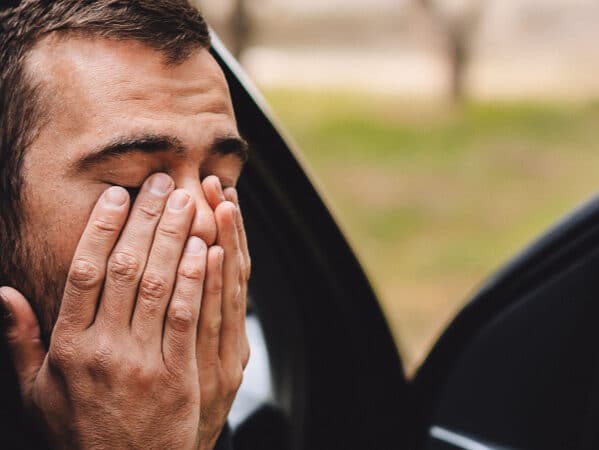Because Valium induces strong feelings of calm and relaxation in patients, it helps manage muscle spasms, seizures, and anxiety attacks.[1]
Since Valium also triggers feelings of enhanced well-being and even euphoria, it can become a drug of abuse.[2] Some people intentionally take more Valium than necessary (or take Valium without needing it) in order to experience a high.
What Is Valium Used For?
Valium is typically prescribed to help sedate and relax patients. It can be used for the following conditions:[1,3]
Anxiety Disorders
Valium is commonly prescribed in the treatment of generalized anxiety disorder, panic disorder, social anxiety disorder, and other common anxiety disorders. It can calm patients down and help to relieve excessive anxiety.
Muscle Spasms
For patients who have experienced muscle injuries or have certain medical conditions (such as dystonia, fibromyalgia, multiple sclerosis, or Parkinson’s disease), Valium can be very helpful in relieving stiffness and spasms.
Seizure Disorders
Certain types of epilepsy can have their effects mitigated by the administration of Valium. It is used as an adjunctive treatment (given after the primary line of treatment).
Alcohol Withdrawal
The symptoms of alcohol withdrawal — such as seizures, anxiety, and agitation — can be better managed with the use of Valium. This can also stave off the many potential complications that can arise from the physical and psychological effects of withdrawal.
Sedation Before Medical Procedures
If there are no complications or negative interactions, Valium is occasionally used to induce sedation in patients before they have to undergo surgery or another medical procedure.
Note that Valium is not an anesthetic. It is simply used as a preoperative medication to reduce anxiety in patients and induce a relaxed state before patients go into surgery. The dosage and timing of the Valium before surgery is determined by an anesthesiologist or other healthcare provider based on factors like the patient’s medical history, the type of medical procedure, the patient’s general health, and their individual needs.
Insomnia
For patients who have sleep difficulties, Valium might be prescribed on a short-term basis. However, due to the risk of the patient developing a dependence on Valium for sleep, this is not a common use of the drug.
How to Tell if Someone Is High on Valium
Because diazepam is taken to reduce anxiety, the high of being on Valium might resemble the kind of high that comes from being on opioids like heroin, but it’s much less intense.[4]
A person high on Valium will appear preternaturally calm or relaxed, perhaps even euphoric. When talking about drug use, euphoria is defined as a state of well-being or happiness that is not appropriate to the context or the setting. While euphoria can generally mean being very happy, a person on Valium will be far more at ease than that, perhaps to the point of being at odds with their environment.
Someone who is high on Valium may have large pupils, memory problems, impulsive behaviors, or extreme mood swings. Other signs that someone may be high on Valium include the following:[1,4]
Sedation
Someone who is under the influence of Valium may appear extremely relaxed and drowsy, even nodding off a bit while in the middle of a conversation or other activity.
Slurred Speech
As an effect of the sedation, someone on Valium might speak in a very slow and slurred manner, unable to clearly articulate.
Impaired Coordination
A person on Valium will have impaired motor skills and coordination. They may struggle to walk, write their name, or type on a device. They may also struggle with slower reflexes and be unable to respond to external stimuli normally and quickly.


Valium Addiction Treatment
Why Might Someone Want to Get High on Valium
People might take excessive amounts of Valium for a range of reasons, such as these:[5,6]
To Get High
The sedative effects of Valium are well known, and this might attract people who want to experience this feeling of calm and relaxation.
To Self-Medicate
While Valium can be used in the treatment of anxiety, stress, depression, or other mental health conditions, it should only be used with a doctor’s prescription. Many people take Valium on their own in an attempt to manage their mental health. They often end up taking too much of it, getting high on Valium in the process.
To Come Down From Other Drugs
Because Valium is well-known as a sedative, it is sometimes used recreationally to manage the withdrawal symptoms of other substances, such as when coming off alcohol or cocaine. It can potentially help to ease muscle pain, depression, or anxiety associated with these withdrawal syndromes.
While diazepam might be prescribed by a doctor for certain types of medical detox, you should not attempt to manage this process on your own. Doing so can be dangerous, potentially triggering life-threatening withdrawal symptoms.
Valium can create a sense of calm and relaxation, but its effects vary depending on the dose and individual. If you’re curious about Valium’s impact or need help managing its use, call us or visit one of our locations for professional support.
- Mental health medications NAMI: National Alliance on Mental Illness. Nami.org. Published 2020. Accessed October 1, 2023.
- Misuse and abuse of diazepam: An increasingly common medical problem Woody GE, O’Brien CP, Greenstein R., International Journal of the Addictions. 1975;10(5):843-848.
- Preoperative oral diazepam for intraoperative blood pressure stabilisation in hypertensive patients undergoing vitrectomy under retrobulbar nerve block anaesthesia: Study protocol for a randomised controlled trial Qian T, Gong Q, Chen C, et al., Trials. 2022;23(1).
- Benzodiazepine use, misuse, and abuse: A review Schmitz A., Mental Health Clinician. 2016;6(3):120-126
- Benzodiazepine use and misuse among adults in the United States Maust DT, Lin LA, Blow FC., Psychiatric Services. 2019;70(2):97-106.
- Challenges of the pharmacological management of benzodiazepine withdrawal, dependence, and discontinuation Fluyau D, Revadigar N, Manobianco BE., Therapeutic Advances in Psychopharmacology. 2018;8(5):147-168











